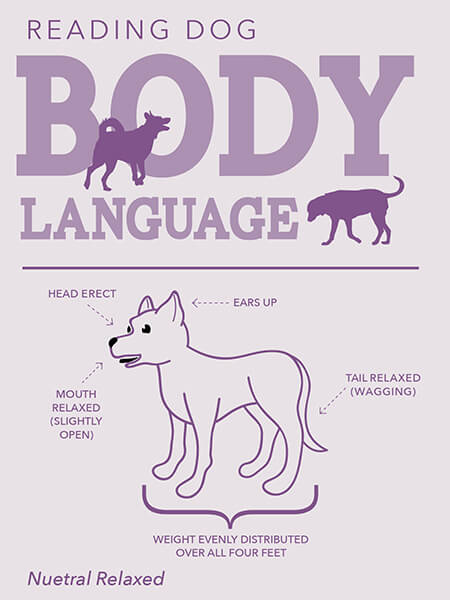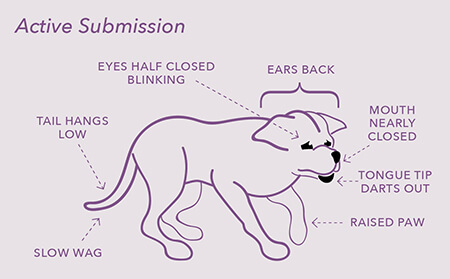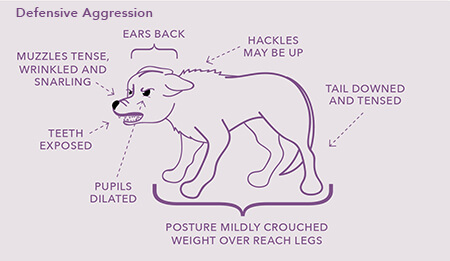
Handling Dog to Dog Introductions
By Steven Appelbaum
Dogs are amazing social creatures with sophisticated, subtle and not so subtle ways of communicating with one another. Products of nature and human breeding, dogs’ basic social instinct is to form cooperative groups to hunt. As predators, dogs are equipped with some impressive physical tools. Powerful jaws and sharp teeth, along with outstanding endurance allow them to run down prey. Dogs also possess the intelligence to develop cooperative hunting strategies, which enables them to go after much larger prey. Dogs who fight with one another run the risk of injury. In the wild, if a dog is injured, he can’t run, which means he can’t hunt. If a dog can’t hunt, he doesn’t eat, which means he will soon die. It’s not surprising then that dog communication is about avoiding conflict and reducing the risk of injury caused by fighting. To maintain accord, dogs let each other know what their mood and emotional state is so that the other dogs can act accordingly.
When introducing dogs to one another, if you have a basic understanding of what each dog is trying to communicate, you will be in a better position to facilitate a conflict-free greeting. How can you tell if either dog is fearful, assertive, unsure, or confident? You can do this by developing a thorough understanding of dog body language, which is essential to determining a dog’s mood.
Why is this important? If a dog is trying to communicate something via body posture and you misread it, you could end up causing the dog stress. For example, you and a dog continue to approach another dog who is trying to communicate that she is afraid. Or perhaps you fail to heed a strange dog’s warning signs to approach with caution. Ignoring the dog’s signal could cause her to escalate to less subtle, more direct means of communication, such as biting or fighting.

As a general rule, when dogs meet for the first time, the interaction should occur in neutral territory. Dogs can be territorial and some will take a dim view or feel threatened by a strange interloper invading their territory.
Even after two dogs have met on neutral territory and gotten along, make sure that prior to allowing them to interact with one another in their territory, that you pick up all food bowls and objects either dog is particularly attached to. This minimizes the risk of resource-guarding challenges between them.
Dogs showing these signs need to be approached in a slightly non-direct fashion. Here’s a dog secret: A direct straight line approach with direct eye contact is usually considered rude and forceful in a dog’s world. Slowly approaching at an angle is less threatening and more desirable. Most dogs learn this, and upon seeing a dog standing in neutral relaxed fashion will approach properly.
However, a young exuberant puppy might be clueless; to avoid problems, you should ensure she approaches properly. How? By approaching the neutral relaxed dog with the puppy on a leash in the proper fashion. If the roles are reversed and the dog at your side is the neutral relaxed one, praise him for appropriate non-aggressive behavior and keep your eye out for any signs of escalated stress. This includes growling, snarling or raised hackles. Most dogs showing the above body posture will be fine with other dogs as long as the other dogs greet them in a friendly, calm fashion.

Dogs communicating these signs usually present no threat or challenge to a dog greeting them. The best thing to do is to leave them alone and let them work out their own comfort levels. Many dogs who start in active-submissive mode quickly switch to neutral relaxed, and from there to play time.
Problems can occur if one of the dogs is very exuberant and simply overwhelms an actively submissive one. When this occurs, the submissive dog might try to run away or could escalate to defensive aggressive behavior. This can be exacerbated further if the dogs are greeting each other in a confined space that prevents the submissive dog from fleeing. The best ways to assist with greeting dogs of this type is to make sure there is ample room for them to move around and away if they need it.
You should also consider putting the overly exuberant dog on a leash and keeping her under control when she greets the submissive one. This enables you to prevent any dog from being physically overwhelmed, stressed, and aggressive. After the initial greeting and comfort is established—and assuming leash laws and safety permits—you can give the dogs free reign to play with one another.

Obviously, dogs displaying these features need to be approached with care. In a natural setting, this type of dog would simply back away or run away. Neither is an option when the dog is being held on a leash or in a confined area, unable to escape. The good news is that upon seeing a dog acting in this fashion, most dogs will keep their distance or only approach with great caution.
As long as the approach is done carefully, the dogs will probably be able to work things out in one of two ways. One, the dog exhibiting defensive aggression will run away or stand his ground until the other dog stops trying to approach. Two, both dogs become comfortable enough to greet each other. Do not attempt to force dogs exhibiting this behavior to greet each other. Allow them the time and space to do this on their own.
The above touches on some of the important basics of dog communication and the ways in which you can make dog-to-dog greetings easier. To learn more, I recommend you check out these two excellent books: Calming Signals: What Your Dog Tells You by Turid Rugaas, and Fight! A Practical Guide to the Treatment of Dog-Dog Aggression by Jean Donaldson.
Steven Appelbaum is the President of Animal Behavior College. Steve has been a professional dog trainer for over 35 years. He is the author The ABC Practical Guide to Dog Training and has been a columnist for Pet Product News International, Pet Age and Off Lead Magazine.


